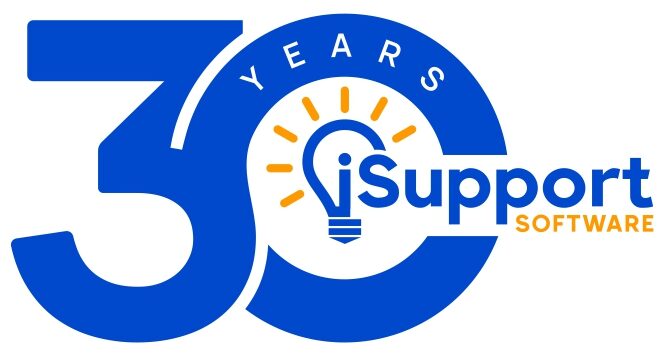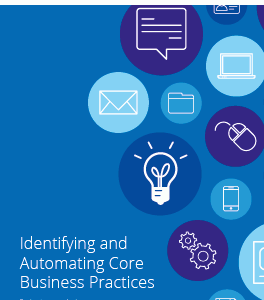A buyers guide for help desk software
How do you decide which software is right for your company? Here are ten items you need to think about before undertaking an overhaul of your help desk or customer service software.
1. On-Premise or Hosted. This of course is the question you have to answer for almost any software you are deploying today. I won’t spend a bunch of time hashing out the pros and cons, but clearly hosted solutions are top of mind these days. The one thing you absolutely have to understand up front, however, is where is your data? If you go with multi-tenancy cloud apps, it’s a good bet that when you quit paying the data will disappear pretty quickly. If you can download the software, what type of downloads are offered? Relational data does not export well to an Excel file so be sure the cloud vendor can get your data to you in a useable format. Ideally look for a vendor that can offer you a variety of choices. If you start with a hosted application and you have the option to bring it on premise, you will be well protected in the future.
2. Telephone and Email Support. Unless you are going with a no-call policy, you cannot ignore that people still like to use email and telephones to get support. How well does the software you are choosing support these processes? Is there tight integration with VOIP phone systems and email servers such as Exchange and Gmail? Support for your business phone system is very expensive as typically you can only have a representative taking one call at a time, whereas other technologies such as email and chat allow your reps to work on multiple problems at once. Be sure that if you are going to have reps on the phone, the software is easy for them to populate information and find information in your knowledge bases, discussion forums, and other support tools quickly and with minimal mouse clicks.
3. Reports. This is a big one. You know you need reports, but what reports do you need? Before going into any demo or evaluation situation, I strongly recommend that you talk with your users and your management and define exactly what each person wants to see and how they want to see it. The majority of your reporting needs should be met in the help desk software you are purchasing, so you don’t have to use external tools like Crystal Reports or Microsoft Bids. These tools, while powerful, are difficult to learn and difficult to use.
Also, how do your managers want to receive reports? Do they want weekly printed reports? Reports delivered to their email in .PDF or Excel format? Do they want to log into your software and see real-time reports? Many vendors will answer these questions with ‘yeah, we can do all of that’, but ask them to produce a report for you on the fly while they are demonstrating the software so you can see exactly how the tool you will depend on behaves. Don’t get caught in the report trap.
Now with that said, also be realistic. So many reports are overly complex and in the end have little value for the time taken to develop them. Try to keep your reporting needs as simplistic as possible. Someone will understand one or two data points plotted quarter over quarter or month over month. If you are developing reports with multiple data points over large time periods, they are not going to be as valuable as you think. And by all means keep your reports to a minimum. Start with a dozen or so that you absolutely have to have and then build from there. All systems work differently, and what was hard to assert in one system might be very simple in another. Use the software before you go crazy building reports.
4. End User Support Tools. There is nothing you can do that will lower your support costs as much as deploying end user support tools that people will actually use. ‘Natural language Boolean full text search with qualifiers’ sounds like a great feature when you are buying it, but in reality when a user has a problem they are going to search for one or two words, and if they can’t find something useful in the first few results they are going to call or fire off an email to you.
More and more end users are looking for tools that circumvent a phone call. Live chat is a great example of this. Not only can they immediately connect with a live person, they, and you, can handle multiple chats at the same time. If you have five reps and three are dealing with three chats each and two are dealing with one phone call, which ones are proving more productive for you? That brings me to my next point…
5. Embrace social media for your end users. You know what people love? Facebook and Twitter. Put your personal preferences aside and think about your users. People live in social media outside of work, and some live in it during work. Why not let them communicate with your help desk from Twitter or Facebook or Google+? What have you got to lose? These are free tools that are available anywhere, anytime. A representative on the help desk can monitor these tools and deal with or route issues that are raised. Any company anywhere could put up a Facebook or Twitter account today and make it available to anyone within a matter of minutes. It does not cost anything and any good help desk solution on the market today will allow you to start incidents directly from, and respond to, most social media platforms.
Don’t forget about blogs and web discussions. Again, this is technology that can be found for free today and integrated with most help desk applications on the market. Write a help desk blog or start a community where you can develop polls to survey your users and explain the challenges you are dealing with. Get users to vote on ideas and discuss their needs.
For more on this topic please see my previous blog post Social Media: why internal help desks can’t ignore it any longer.
6. The Guts. The difference between success and failure is often automation. If your needs warrant it, look for help desk tools that have rules engines that allow you to automate any part of your process. Specifically look for rules that can be applied to incoming and outgoing emails and automatically route tickets based on skills, location, categorization, or other content present in a ticket, and personal rules that reps can use for specific situations. Look for tools that have flexibility in their rules; if the best process in the world is invented tomorrow, can you use rules for it or are you locked into a process the vendor has chosen?
Look for tools that allow you to design the input screens and add fields that are important to your business, and tools that allow you to brand your external support offerings. Business is constantly changing; as I discuss below, most companies tend to keep their help desk software for at least four years so try to think down the road. This is also a good time to talk with your vendor about their release history. Remember, ask your vendor about their upgrade procedure, understand the amount of work involved with both testing and upgrading, and budget accordingly if you will need to hire consultants to help you along the way.
7. The Hidden Costs. We have all negotiated deals where we thought we were getting everything we wanted, and then bam, “There is an extra charge for that.” I am sorry to say that the help desk industry is no stranger to this. I’m not insinuating that vendors are not being honest; it is just the way the software industry in general works. Here are some points to pay attention to:
- ‘It’s Free’. I don’t care what a vendor says, no business can survive on zero revenue. At some point, for something, you are going to have to pay. It might not be for the software per se but remember you will need training, upgrades, or support. The only possible exception to this rule is software that is supported by in-app advertising. In that case you have to decide: is the distraction of the advertising worth not paying anything?
- ‘You didn’t buy that module’. Many software products are sold as modules or components. Be sure that you understand the features you are getting for the price. Then take the extra step of having the vendor give you a price sheet for all the potential add-ons you might need down the road. Don’t forget to include any additional costs for support options, upgrades, and training.
- ‘You might need some consulting with that’. Many software companies today are far from software companies. Their business model is actually based on revenue from services. When you are evaluating help desk software, ask the company what percent of their revenue comes from software vs. consulting revenue. Are they selling you a tool kit that requires some assembly or is their solution configurable by someone who can read and follow a manual?
I am not saying any of these scenarios are wrong, just understand that you are going to encounter different pricing methods. I have spent 22 years of my life selling help desk software and I have talked to thousands of people. I hear stories on a daily basis of people who thought they got something they didn’t. A little research, and common sense, will go a long way toward understanding your real cost.
8. The four year cost: It’s my experience that two factors cause a company to reevaluate its current help desk software: a change in management or around four years of usage. The size of the help desk and the technical nature of the products you are supporting will directly correlate with the complexity of the software solution you will choose. Help desk software that supports complex business logic will take some time to install and tune. Most companies are not going to buy a product, deploy it, and then rip it out in a year or two unless they really just chose the wrong application.
Ask your vendor to give you a four-year cost estimate for the solution. Include everything: license, maintenance, support, and training. As I mentioned above, don’t forget new releases. If you want the vendor to do your upgrades, plan on at least one a year so you can stay current. I would recommend that you ask the vendor to guarantee the pricing of the fixed costs over four years. Many won’t, and that is their right; some will give an escalation schedule to account for inflation, and a few might give you the guarantee. It does not hurt to ask and if you can, get your costs fixed for four years; that is one less worry on your plate.
9. Support: This is simple. When does your vendor staff a live support line and what tools are available when you are out of that live window? In some situations your vendor will offer service level agreements. If they do, be sure to understand what your compensation is if they fail to meet them. An SLA is worthless if there is no penalty for missing it.
10. Reputation: At my last count there were about a bizillion companies selling help desk software. Seriously, just do your homework on a company. The biggest, the oldest, the most technologically advanced are not always the best deciding factor. Remember this is a purchase you are going to have to live with for a number of years. The best advice I can offer is to go with your gut and then be sure the company is financially stable.
When I sat down to write this I had no idea where to start, and now I am having trouble ending it because there are so many points that should be considered when purchasing or upgrading your help desk software. I have gone to great strides to make this as vendor neutral as I can, and I have made many points that are things my company does not or will not do. I hope you find some value in my 22 years in this business. As a parting thought, just remember that more important than anything else, be sure your solution lowers your support costs AND increases your customer satisfaction.
About the author: Daren Nelson is the founder & CEO of iSupport Software (FKA GWI Software) . As one of the oldest software companies in the world, iSupport has pioneered many of the technologies used today by help desks and customer service departments worldwide. iSupport Software can help your support organization integrate social media channels, significantly reduce your support costs, and increase your customer satisfaction. Which is, well, awesome.
Want to learn more about what we offer? Check out our product offerings at www.isupport.com/products.




